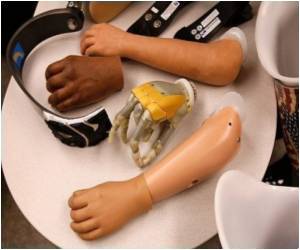
‘Using the new method, scientists found that cracks in the skin are not straight; instead they follow topographical ridges of skin, which have triangular patterns.’
Tweet it Now
The outermost layer of skin, the stratum corneum, regulates water loss from the body and protects underlying living tissue from germs and the environment, in general. It is pretty tough, protecting the body from extreme temperatures, rough surfaces, and most paper edges.“Most people think the skin is smooth and flat just like a Photoshopped advertisement. It isn't,” said German. “If you look at the back of your hand, the skin has small triangular patterns on it. These shapes are caused by small canyons in the skin. Those canyons act just like notebook perforations when you tear a page out; they are weak points. We wanted to see how these topographical features acted as weak points of the skin.”
The study was a fundamental one and the initial intention was not to solve tissue expansion issues, but it did touch on four major points:
- First, assuming skin is smooth and without major cracks, researchers looked how the toughness of skin varied significantly in relation to its water content. They found dry skin is brittle and easier to break than hydrated skin.
- Second, researchers used advanced imaging to track skin deformation and stretching which, combined with the structure of the skin itself, correlates to where cracks in the skin begin. This can help scientists and doctors predict where fractures may occur in the future.
- Next, scientists found that cracks in the skin are not straight; instead, they follow topographical ridges of skin, which have triangular patterns.
- Finally, researchers proved that most fractures propagate along cell-cell junctions rather than breaking the cells themselves. This does not always happen, but it suggests that cell junctions are structurally the weakest points of the skin.
This work also sets the stage for a variety of future studies assessing changes in skin composition, environmental pH, or bacterial colonization on skin’s toughness, said German.
The safety razor company Schick funded parts of the research. Graduate students Xue Liu and Joseph Cleary were co-authors of the work.
Advertisement
Advertisement















